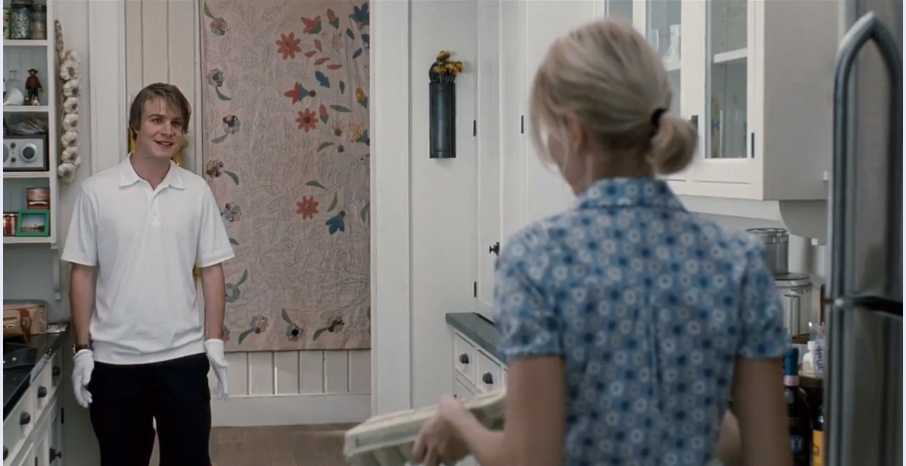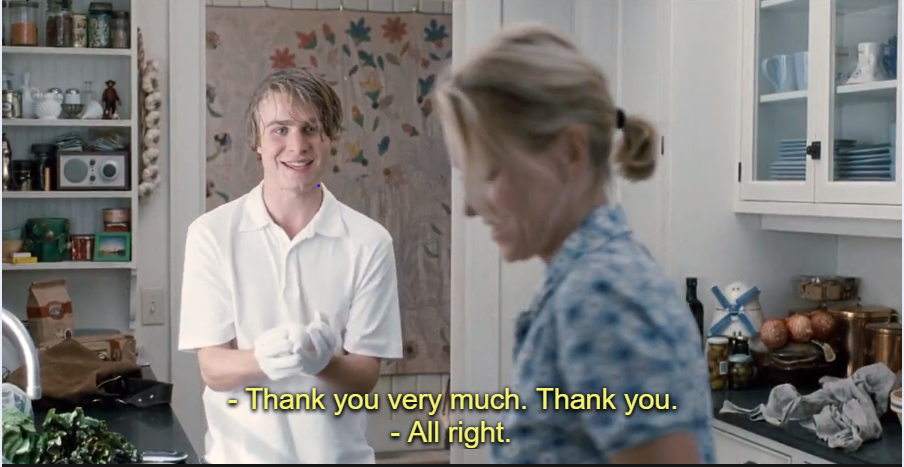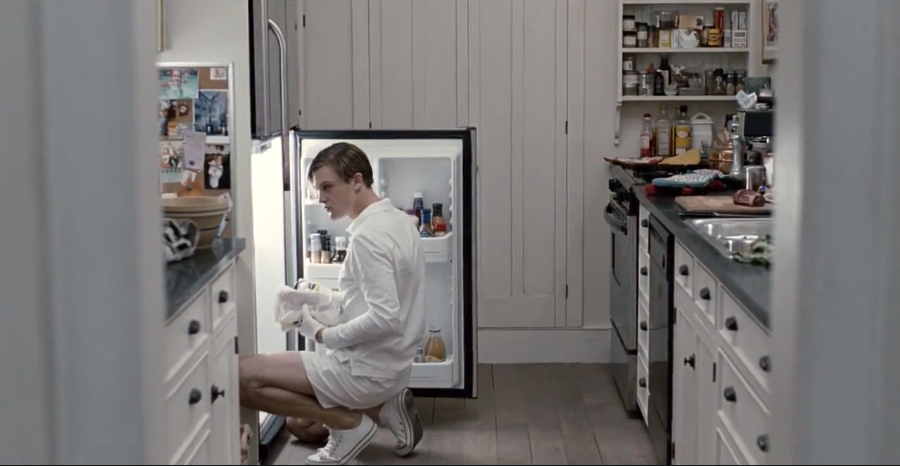The 2007 film Funny Games, directed by Michael Haneke, might just be the cure to the modern horror movie we didn’t know we needed. It features extremely inventive storytelling techniques, not just for a horror film, but for any film. From breaking the fourth wall, to sparse use of music, and use of off-screen action to evoke tension, this creepy home-invader thriller sets a tone for how to make a suspenseful film without undermining the intelligence of its audience.
The film is about a family–the protagonist played by Naomi Watts and her husband played by Tim Roth, and their child–that goes on a weekend get-away to their lake house. Things go awry when two strangers, apparently dressed as golf caddies, arrive and ask to borrow some eggs for the folks next door. But the strangers are not who they seem and soon the family is held captive as hostages for the intruders to psychologically toy with and harm.
Atmosphere and mood are set through seemingly benign scenes that build into increasingly dreadful ones as the story progresses. The use of music, or lack thereof, to sustain that tension is something to be admired in the movie’s design.
Instead of using loud music cues to evoke jump scares, or even creepy synthesizers or strings to set a tone, the movie relies entirely on diegetic sound and, except for the opening title, the music that appears in the film is only music that takes place within the world of the film–a style most often found in direct cinema/cinema verite documentary.
Not only does that make the story more real, but it makes the intensity of the powerlessness of later scenes even more prominent.
When the uninvited guests make their first appearance, they appear in all white–white shirts, white shoes, and white gloves. They come to borrow eggs, also white. Cinematography in the film works to extend this motif by showing the first villain through a screen door, that appears white from sun rays entering through it, in the first scene that he appears on our protagonist’s property.
Things turn ugly when the villain breaks the eggs, then receives more, then breaks those, then refuses to leave until he gets more. Then the second villain arrives, also dressed as a caddy, and kills their dog. The villains hold the family hostage and blames them for the situation for being rude to them about borrowing the eggs.
The motif is a reflection of their strange reasoning for their action and metaphorical presence in the movie. It’s a whiteness of hideous implications behind it’s supposed clean and pure surface. The dark intentions of the villains contrasts their facade of politeness throughout the film–they constantly say “please,” “thank you,” and “if you wouldn’t mind” as they play mind games and torture their victims. Their empty facade of politeness is what is symbolically represented by the repeated use of white in the film.
When it comes to the violence that inevitably takes place in the film, almost all of it occurs off screen. We only hear or see the after math of it, which intensifies the dread for the viewer.
In one scene, one of the main characters, the child, is shot and killed off screen. But the camera holds on one of the villains in the next room making a sandwich, instead of on the violence itself. The shot is heard off screen and then the scene lingers in the kitchen as the villain makes his sandwich.
Again, this is an extension of the same things set by the villains in the beginning: a seemingly banal facade of a scene–someone making a sandwich–with a sinister underbelly–someone getting shot off screen–that offsets it. This tonal discontinuity, and the lack of showing any violence that takes place, creates a gut wrenching sensation that intensifies for the viewer as the film progresses.
This technique also adds realism to the film because in real life violence and tragedy do happen co-currently among the banality of day-to-day life, it is just not always visible to all of us.
The film also makes great use of long holds on wide, single subject shots, which places a greater emphasis on the characters and their situation than on the distraction of cinematic techniques trying to cause us to jump out of our seats.
In the scene following the boy getting shot, the two villains briefly exit, and Naomi Watts attempts to break free from her bonds. We see a long held wide shot of her attempt, first on the floor, then getting up to stand, then falling over and trying all over again, all while she is tied up. Each agonizing little moment of this struggle is meditated upon and magnified through very minimal, but intentional, film techniques.
The light of the room is upturned, creating stark shadows evocative of dread, the boy’s blood is spattered on the wall, and his body is on the floor, partially obscured by the couch. The slow-burn reality of this scene, and all the environmental touches from when we last saw that room, work so much better than overly pretentious quick edits, blurs, double exposures, dissolves, quick pans, dutch angles, or tilts–the kind of techniques that so often accompany a violent death in a conventional horror film. It’s the character, her struggle, and this horrific but subtly composed environment we watch her in, that becomes the focus of the scene instead.
We’re not subjected to “shaky cam,” “pov cam,” “found footage,” or any other cliched techniques so often found in horror movies today to try and beat the scare into us with the blunt end of a stick.
Instead, the audience is left to simmer on the scenes, fester in these uncomfortable, almost nauseating moments. But even though there is no violence on screen, the film has a far deeper and longer lasting impact of dread and terror than most other modern horror films.
To top it all off, the film even plays with the ontology of the film by having the villains break the fourth wall repeatedly.
The effect of this can be quite unsettling. From time to time, the villains in the film will stare directly into the camera, and occasionally address the audience directly with snide comments about where story of the film is going.
There is even a moment when the protagonist, Naomi Watts, shoots one the villains and appears to be getting the upper hand. But the other villain breaks the fourth wall again by finding a TV remote and “rewinding” the movie to before his intruder partner was shot, and then takes the gun away from her.
The effect is chilling because when the villains break the fourth wall it feels as if their, very realistic and plausible, reality is seeping into ours. It reminds us that though we may use movies to escape, our banal experience of day-to-day life happens co-currently with horrors happening in somebody’s else’s life. Right now, as I’m typing this, someone’s home could be invaded, someone’s life could be in danger, someone could have just been hit by a car, but does that make me move out of my seat? Not for a second. A movie like this, though, makes me think twice about keeping still.
It’s these deeper thoughts and sense of existential dread that this film evokes through it’s inventive storytelling techniques that cuts so sharply with me to this day. Though the setup to each scene may seem to lack ornamentation, the film remains more vivid in my memory by it’s subtlety while other, more conventional, horror films fade into the background.







Leave a Reply